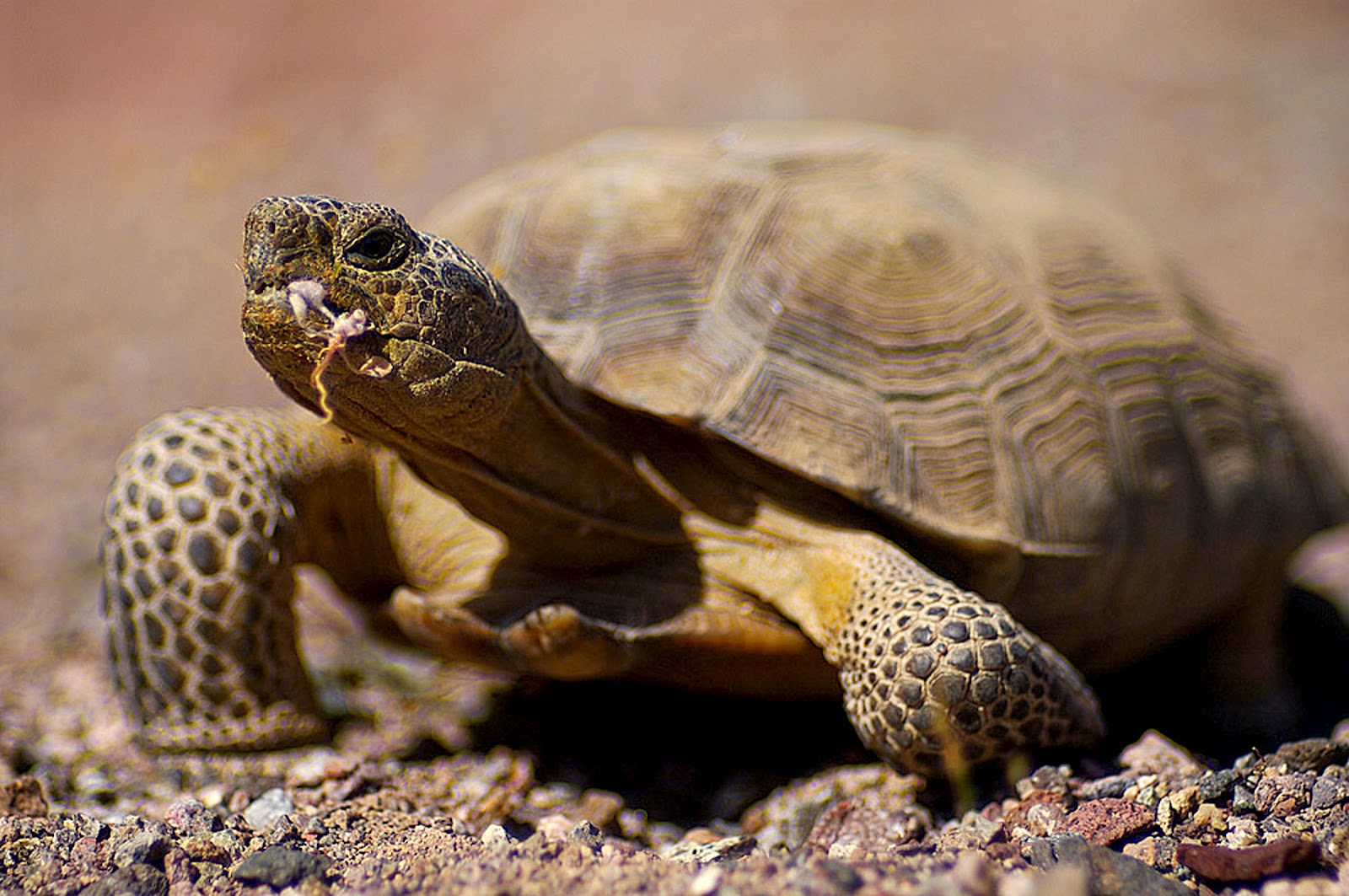The desert tortoise is a remarkable species that has captivated the interest of conservationists, biologists, and nature enthusiasts for decades. Found in the arid landscapes of the southwestern United States and northern Mexico, this gentle reptile is a master of survival, thriving in some of the harshest conditions on Earth. With its distinctive domed shell and slow, deliberate movements, the desert tortoise is not just an icon of the desert ecosystem but also a reflection of nature’s resilience and adaptability.
Known for their ability to live up to 80 years in the wild, desert tortoises have developed incredible adaptations to endure extreme heat, scarce water, and limited food sources. These reptiles spend the majority of their lives in underground burrows, which provide refuge from the scorching desert sun and freezing winter nights. Despite their resilience, the desert tortoise faces numerous threats, including habitat loss, climate change, predation, and human interference, making conservation efforts more critical than ever.
In this comprehensive guide, we’ll delve into the fascinating world of the desert tortoise, exploring its unique characteristics, habitat, behavior, diet, and the challenges it faces. We’ll also discuss the importance of conservation initiatives, offer practical tips for those interested in protecting this species, and answer some frequently asked questions about this extraordinary reptile. Whether you’re a curious reader, a student, or a wildlife advocate, this article aims to provide a detailed and engaging overview of one of nature’s most resilient creatures.
Table of Contents
- Biology and Physical Characteristics of the Desert Tortoise
- Natural Habitat and Geographic Range
- Behavior and Life Cycle of the Desert Tortoise
- Diet and Nutrition of the Desert Tortoise
- Adaptations for Survival in Extreme Environments
- Threats to the Desert Tortoise Population
- The Role of Desert Tortoises in Their Ecosystem
- Conservation Efforts and Legal Protections
- Tips for Supporting Desert Tortoise Conservation
- Captivity and Care: Ethical Considerations
- The Cultural and Symbolic Significance of the Desert Tortoise
- How Climate Change is Impacting the Desert Tortoise
- Research and Studies on Desert Tortoise Behavior
- FAQs About the Desert Tortoise
- Conclusion: Why the Desert Tortoise Matters
Biology and Physical Characteristics of the Desert Tortoise
The desert tortoise (Gopherus agassizii) is a medium-sized terrestrial reptile belonging to the family Testudinidae. Its physical appearance is both functional and fascinating, designed to withstand the harsh conditions of its desert environment. Adult desert tortoises typically measure between 9 and 15 inches in length and weigh anywhere from 8 to 15 pounds. Their most distinguishing feature is their high-domed carapace, which is usually brown or tan in color, offering excellent camouflage against the sandy and rocky desert terrain.
One of the unique physiological traits of the desert tortoise is its ability to store water in its bladder for extended periods, a critical adaptation in environments where water is a scarce resource. Additionally, the tortoise’s scaly skin helps minimize water loss, while its strong, clawed limbs enable it to dig burrows and forage for food effectively.
Sexual dimorphism is evident in desert tortoises, with males generally being larger and possessing longer gular horns (projections under the chin) than females. These horns are often used in combat during mating competitions. Furthermore, males have a concave plastron (the underside of the shell), which helps them mount females during reproduction. These physical features not only contribute to the tortoise's survival but also play a vital role in its reproductive success.
...
FAQs About the Desert Tortoise
- What is the lifespan of a desert tortoise?
- What do desert tortoises eat?
- Are desert tortoises endangered?
- Can I keep a desert tortoise as a pet?
- What adaptations help the desert tortoise survive in the desert?
- How can I help conserve desert tortoises?
Desert tortoises can live up to 80 years in the wild, though their lifespan is often shorter due to predation, habitat loss, and other threats.
They primarily consume grasses, wildflowers, and cacti. Their diet is highly adapted to the arid desert environment.
Yes, desert tortoises are listed as vulnerable or threatened in various parts of their range due to habitat destruction, climate change, and human activities.
In many areas, it is illegal to capture or own a wild desert tortoise. Captive breeding programs exist, but caring for a tortoise requires significant responsibility and adherence to legal regulations.
Key adaptations include their ability to store water, their burrowing behavior, and their tough, scaly skin that reduces water loss.
You can support conservation efforts by donating to wildlife organizations, spreading awareness, and respecting desert habitats when visiting these areas.
Conclusion: Why the Desert Tortoise Matters
The desert tortoise is more than just a symbol of resilience; it is an integral part of its ecosystem, playing a role in seed dispersal and maintaining the health of desert habitats. Protecting this species is not only a moral obligation but also essential for preserving the delicate balance of life in arid regions. By understanding the challenges they face and supporting conservation efforts, we can ensure that future generations will continue to marvel at the desert tortoise and its incredible story of survival.
You Might Also Like
Empowering Communities For Change: The Foundation Of Civic EngagementBuccan: A Culinary Gem Redefining Modern Dining
Tmdb: The Ultimate Guide To Movies, TV Shows, And Entertainment
The Iconic San Siro: A Monument To Football And Culture
Exclusive Guide To The Westin Austin Downtown: Your Ultimate Staycation Destination
Article Recommendations
- Ken Block The Life Achievements And Impact Of A Motorsport Icon
- The Ultimate Guide To Gurran Lagann A Masterpiece Of Mecha Anime
- Best Tools And Features For An Instegram Viewer

